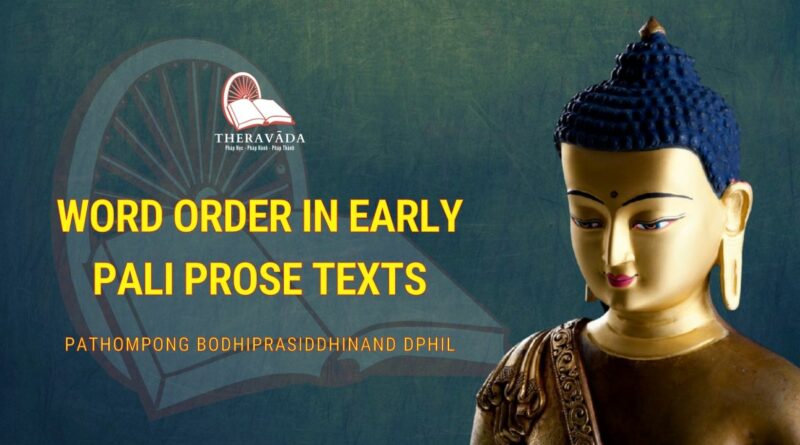WORD ORDER IN EARLY PALI PROSE TEXTS
PATHOMPONG BODHIPRASIDDHINAND DPHIL (OXON)
Abstract
Drawing on both Thai and Western scholarship, this thesis aims to investigate word order in early Pāli prose. The texts selected for study are: (A) the Brahmajālasutta (BJS), the Sāmaññaphalasutta (SPS) and (B) a portion of
the commentary on the Brahmajālasutta (BJSA). (A) represents the earliest prose style, being the initial portion of the Dīghanikāya and thus of the Suttapiṭaka in its traditional arrangement. (B) by contrast, represents the
classical commentarial style, being the initial portion of the commentary on the Dīghanikāya ascribed to Buddhaghosa. About five centuries separate the two texts in the form in which they have reached us. I have limited my study to these two bodies of text for pragmatic reasons, since a large sample would be too much to handle in one thesis. The thesis is divided into five main chapters. Chapter One presents the research question and an overview of theories on marked and unmarked word order. Relying primarily on Thai scholarship, as it is more comprehensive than Western, I propose reasons for divergences from the SOV word order usually found in early Pāli texts.
Chapter Two investigates the factors leading to the post-verbal placement of case forms. Chapter Three investigates post-verbal participles, gerunds and infinitives. Chapter Four examines all the relative clauses in the selected texts.

